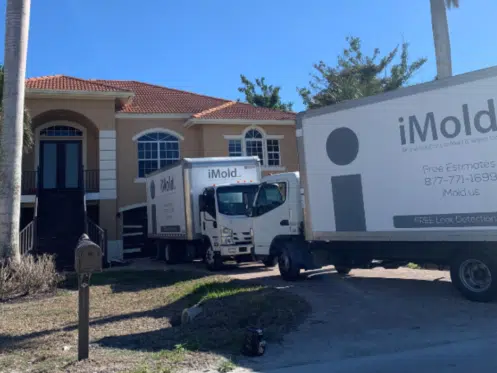Detecting and Preventing Mold: A Comprehensive Guide to Warning Signs and Prevention
Mold is a particularly common household issue that can cause damaging health problems and damage your property if addressed. Detecting the warning signs of a mold problem and taking preventive measures are essential for maintaining a healthy living environment.
Want to keep your home safe? Let’s explore the warning signs of a mold problem, where to look for mold growth, and effective prevention strategies to keep mold at bay.
Mold Warning Signs
Musty Odor
Typically, one of the first signs of mold growth is a distinct musty odor. If you notice an unpleasant, earthy smell in certain areas of your home, it may indicate hidden mold growth. Pay close attention to areas with poor ventilation, high humidity levels, or a history of water damage.
Visible Mold Growth
Apparent signs of mold growth, such as black, green, or white patches, indicate a problem. Check for mold growth in the following areas:
- – Bathrooms Inspect tile grout, shower curtains, and moisture-prone areas.
- – Basements and Crawl Spaces Look for mold on walls, floors, and stored items.
- – Attics Check under the roof, on insulation, and around ventilation systems.
- – Kitchen Examine under sinks, around faucets, and behind appliances.
Water Damage and Moisture Issues
Water damage and excess moisture create ideal conditions for mold growth. So, it’s essential to keep a lookout for the following warning signs:
- – Stained or discolored walls and ceilings.
- – Peeling or bubbling paint or wallpaper.
- – Warped or buckled flooring.
- – Condensation on windows or pipes.
- – Plumbing leaks or visible water stains.
Allergic Reactions
If you or your family members experience unexplained allergic reactions or respiratory issues that worsen when at home but improve elsewhere, it could be a sign of mold presence. Common symptoms include sneezing, coughing, itchy eyes, nasal congestion, and respiratory discomfort.
High Humidity Levels
High humidity promotes mold growth. Levels above 50 percent indicate excessive moisture and create a favorable environment for mold. Using a hygrometer device to measure the humidity levels in different areas of your home can help. Pay particular attention to rooms with inadequate ventilation, such as bathrooms, kitchens, and basements.
Deterioration of Materials
Mold can cause materials to deteriorate over time. Look for signs of deterioration, such as:
- – Crumbling drywall or plaster.
- – Disintegrating or rotting wood.
- – Deteriorated caulk or grout.
- – Weakened or stained fabrics or upholstery.
Mold Prevention Strategies
Control Moisture
Preventing excess moisture is the key to mold prevention. Implement the following measures:
- – Fix leaks: Repair any plumbing leaks, roof leaks, or moisture issues immediately.
- – Maintain proper ventilation: Use exhaust fans in bathrooms, kitchens, and laundry rooms. Open windows when weather permits to improve air circulation.
- – Use dehumidifiers: In areas with high humidity, especially basements and crawl spaces, to keep moisture levels under control.
Proper Insulation
Insufficient insulation can lead to condensation and mold growth. Ensure proper insulation in attics, crawl spaces, and exterior walls to prevent moisture buildup.
Regular Cleaning and Maintenance
Regular cleaning can help prevent mold growth. Follow these guidelines:
- – Clean and dry bathroom surfaces regularly to prevent mold buildup on tile grout and caulk.
- – Vacuum and dust all areas throughout your home regularly to remove mold spores and prevent them from settling on surfaces.
- – Clean and dry carpets, rugs, and upholstery thoroughly, especially if they have been exposed to moisture.
Monitor Humidity Levels
Regularly monitor and maintain indoor humidity levels below 50 percent. Use a dehumidifier if necessary, especially in humid climates or during the rainy season.
Proper Ventilation
Ensure proper ventilation throughout your home:
- – Install and use exhaust fans in all bathrooms, kitchens, and laundry rooms.
- – Open windows periodically to allow fresh air circulation.
- – Use air conditioning and heating systems with proper ventilation.
Promptly Address Water Damage
If you experience water damage or leaks, act swiftly:
- – Dry out wet areas within 24-48 hours to prevent mold growth.
- – Remove and replace water-damaged materials that cannot be thoroughly dried.
- – Use fans and dehumidifiers to aid in the drying process.
Don’t Get Duped by Mold
Detecting the warning signs of a mold problem and implementing effective prevention strategies are essential for maintaining a healthy and mold-free home.
By being vigilant, promptly addressing water damage, controlling moisture levels, ensuring proper ventilation, and practicing regular cleaning and maintenance, you can prevent mold growth and protect the well-being of your household. Remember, mold prevention is a proactive effort that will save you time, money, and potential health issues in the long run.

